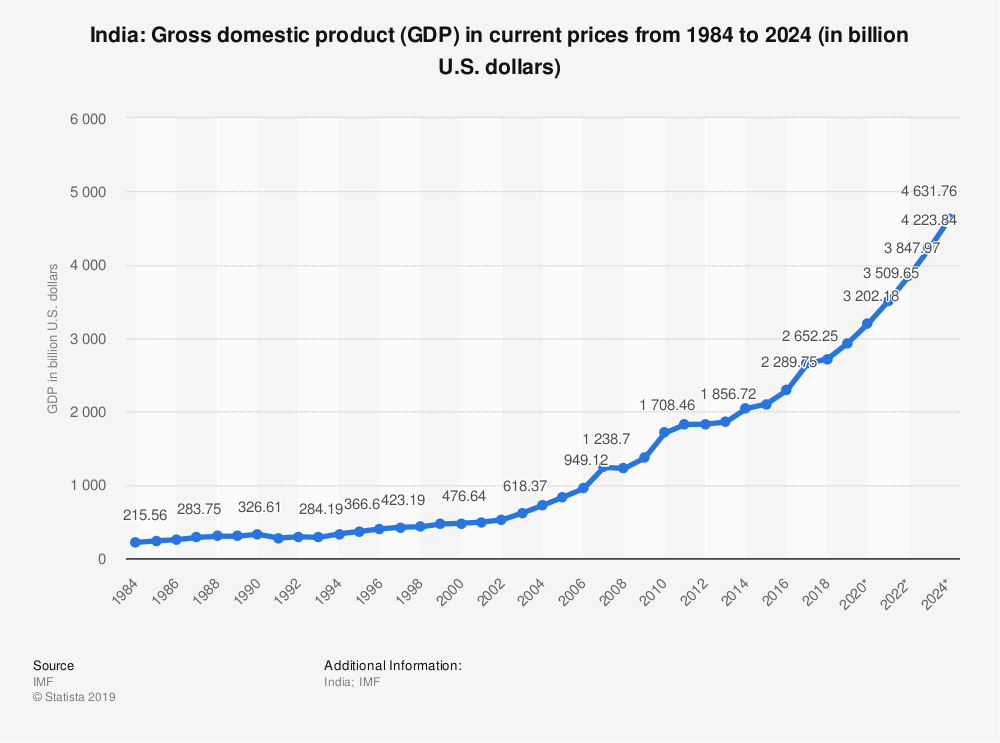
The impact of lower GDP growth on everyday Life has received little attention in the financial press or any other arena. The effect on our daily lives has been ignored, because of the subjective nature of economics, and also the personal character of those who are affected. Sometimes the impact is ignored, sometimes it is treated as a social problem rather than an economic one. But the effects of lower GDP growth on everyday Life are just as real, just as profound and just as immediate as the impact of high-low interest rates on our lifestyles.
Total national output, generally known as GDP, It is the assessed estimation of products and enterprise.
When the GDP of India is low, it prompts a downturn, which has sway on the winning capability of individuals, diminishing wages, among others.
Before long, the GDP eases back down, or is negative; it can prompt feelings of trepidation of a downturn.
The high pace of Indian GDP growth rate has been significant not for the financial wellbeing of a nation yet. Besides, for the financial strength of the basic man either or in a roundabout way.
Indian GDP Growth
Indian economy is by all accounts spiralling downwards.
The World Bank, India’s most significant bank, the State Bank of India, had additionally anticipated a lower Indian GDP growth rate. Eco wrap report, the SBI’s exploration group has planned a 4.6 per cent development rate for the economy, much lower than its prior gauge of 5 per cent.
Awful news originated from a third source, the Central Statistics Office, which discharged the propelled assessments of the National Accounts on Tuesday, 7 January. The CSO said that the nation’s GDP would develop at 5 per cent (at 2011-12 costs) and 7.5 per cent at current expenses.
Development statics of GDP

The CSO said that the nation’s GDP would develop at 5 per cent (at 2011-12 costs) and 7.5 per cent of current prices. Every projection bleakly contrasted with how positive most evaluating offices. And monetary establishments had been toward the start of the earlier year.
There are cut off points to the degree to which the government upgrades the Indian economy.
Government consumption merely represents over 10 per cent of India’s GDP. Second, in an economy that has stagnated, charge assortments begin to decrease. It is as of now appearing in the information.
Impact on Everyday Life
Even though winter has gone, but there is, as of now, a chill in the Indian economy in light of a log jam and noteworthy drawback dangers approaching from all quarters, with inquiries on whether the current financial headwinds are recurrent or It essential.
Without precedent for a long time, the Indian GDP growth rate beneath 6 per cent year over year for two consecutive quarters, compelling policymakers and markets to re-examine India’s viewpoint. On the business side, a few centre segments, including auto, land, and assembling, are in deep waters.
Residential vehicle deals in India keep on drooping, with the general car industry detailing a decrease of 23.55 per cent in August 2019. With a decline of 31.57 per cent in the month, the defeat in the traveller vehicle portion has proceeded for longer than a year without precedent for a decade.
The land segment is pondering the most noticeably awful ever lull in numerous decades. In essence, over 1.3 million houses worth around 5 per cent GDP of India is lying unsold across India.
The log jam demonstrates that the household request has grabbed a seat. Also, essential elements added to the drowsiness. These incorporate changing shopper inclinations because of a rising extent of twenty to thirty-year-olds among purchasers and innovation developments, the two of which are changing interest designs.
